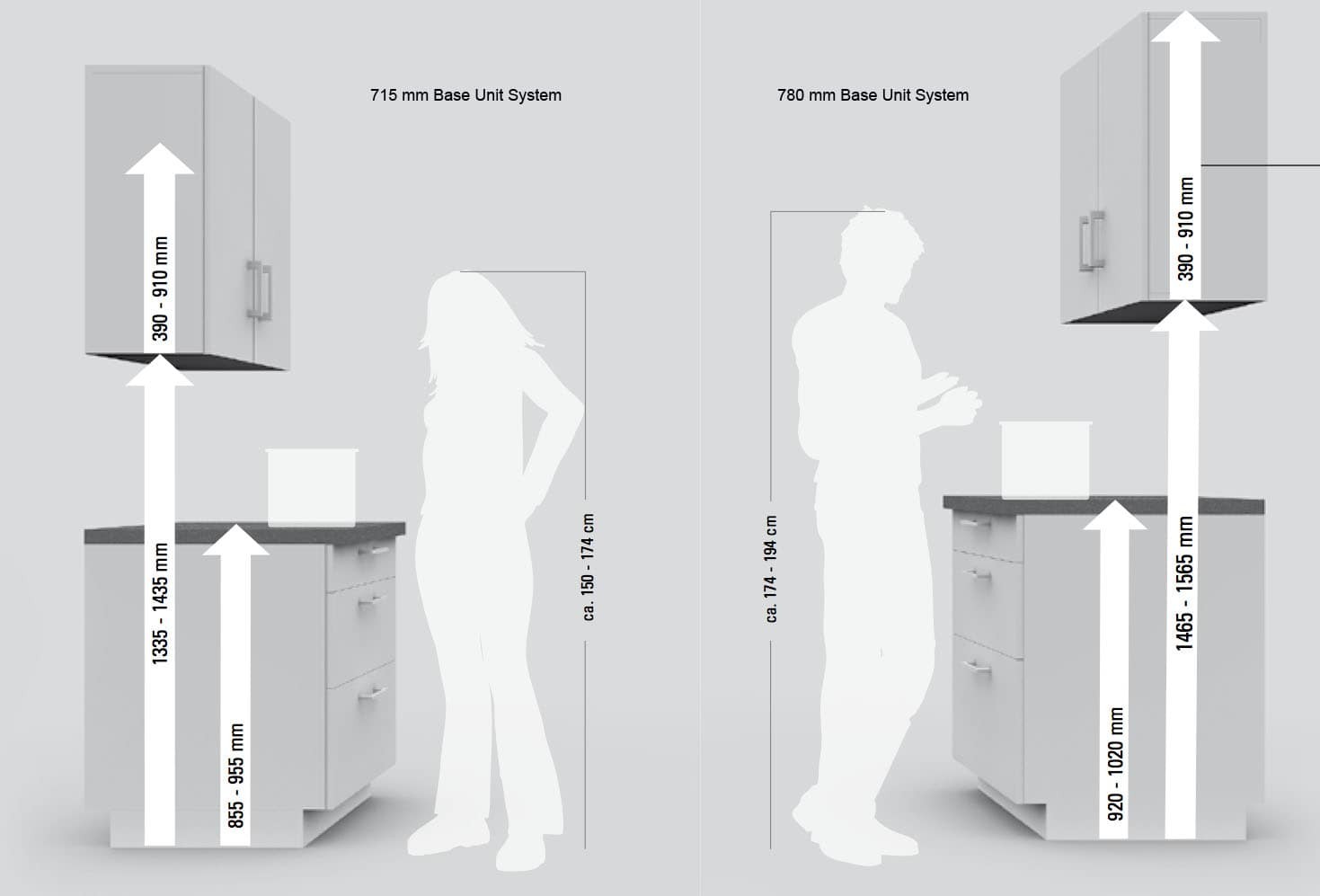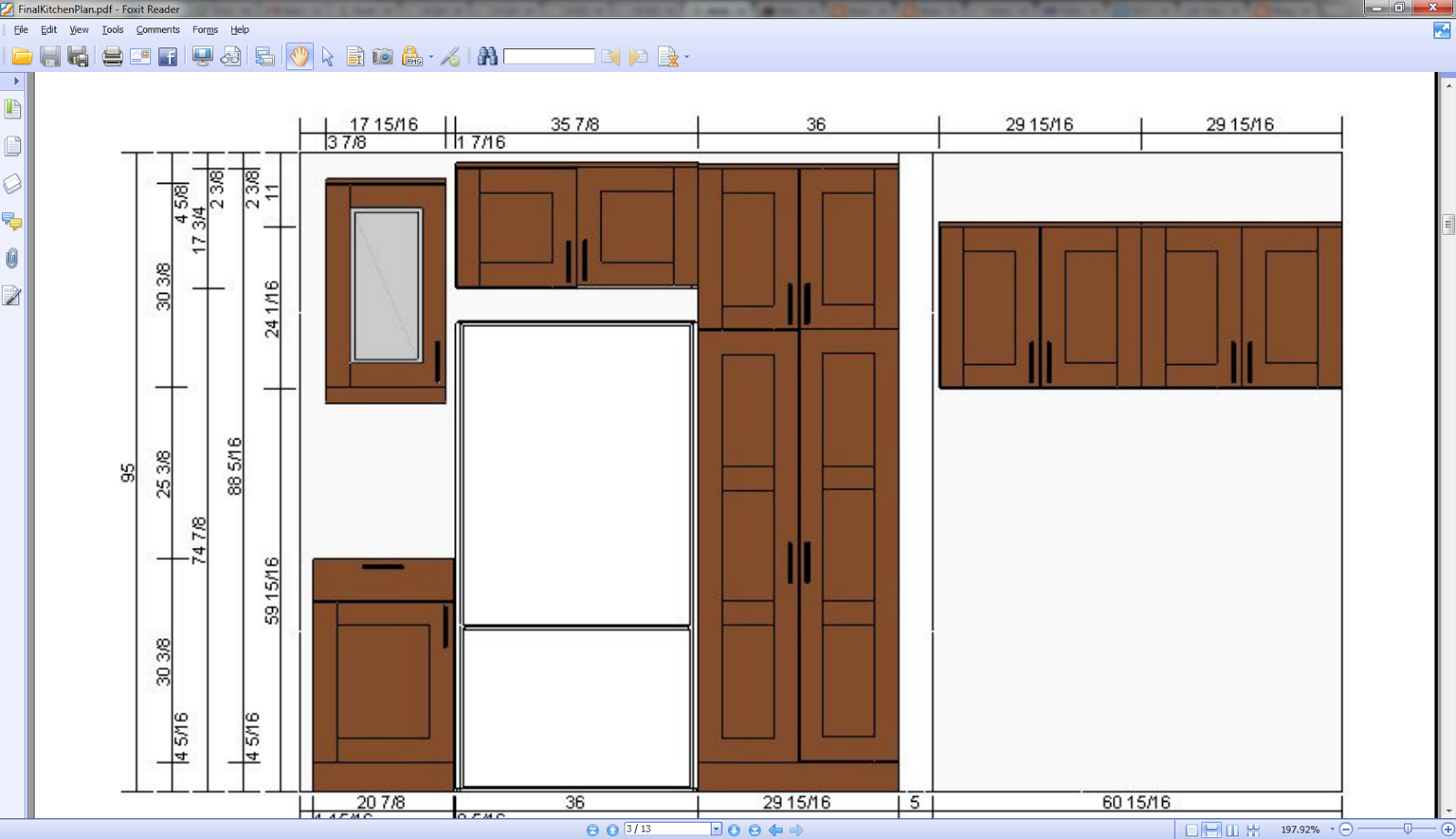Determining the Optimal Height for Cabinet Installation

The seemingly simple act of installing kitchen cabinets holds a surprising depth of ergonomic and aesthetic considerations. Proper cabinet height directly impacts functionality, comfort, and the overall visual appeal of the kitchen. A poorly planned height can lead to strain, inconvenience, and a less-than-ideal workspace. Understanding the interplay between cabinet base height, countertop height, and individual user needs is crucial for achieving a truly optimal kitchen design.
Standard Countertop Height and its Relation to Cabinet Base Height
The standard countertop height is generally accepted to be 36 inches from the finished floor. This measurement is a compromise designed to accommodate the average adult’s height and working posture. However, this standard height is inextricably linked to the height of the base cabinets. Since the countertop rests directly on the cabinet’s top surface, the base cabinet height must be carefully calculated to achieve the desired countertop height, factoring in the thickness of the countertop material itself (typically 1.5 to 2 inches). Therefore, a standard 36-inch countertop often necessitates a base cabinet height of approximately 34 to 34.5 inches.
Factors Influencing Ideal Cabinet Height
Several factors beyond the standard 36-inch countertop height contribute to determining the ideal cabinet height for a particular kitchen. Ceiling height significantly impacts the overall design. In kitchens with low ceilings, taller cabinets might feel oppressive, while in high-ceilinged spaces, standard height cabinets may appear disproportionate. The height of the primary users of the kitchen is paramount; shorter individuals might find standard height countertops too high, leading to discomfort and strain. Conversely, taller individuals might find them too low. Finally, the kitchen’s design style plays a role. A modern, minimalist kitchen might favor sleek, tall cabinets, while a traditional kitchen might prefer more classic proportions.
Advantages and Disadvantages of Different Cabinet Base Heights
The choice between standard, tall, and short base cabinets presents a trade-off between aesthetics, functionality, and user comfort. Standard-height cabinets (approximately 34-35 inches) offer a balance between accessibility and storage capacity. Taller cabinets maximize storage space, but may require step stools for upper shelves, particularly for shorter users. Shorter cabinets are more accessible for individuals with mobility issues but offer less storage.
| Cabinet Height (inches) | Countertop Height (inches) | Advantages | Disadvantages |
|---|---|---|---|
| 34-35 | 36 | Good balance of accessibility and storage, widely available | May not be ideal for very tall or short individuals |
| 36-42 | 37.5-43.5 | Maximizes storage space | May require step stools for upper shelves; less accessible for shorter users |
| 30-32 | 31.5-33.5 | Increased accessibility, particularly for shorter individuals or those with mobility limitations | Reduced storage capacity |
Cabinet Installation

The successful installation of kitchen cabinets hinges not only on precise height determination but also on the strategic placement of both upper and lower cabinets. Proper spacing dictates not only the aesthetic appeal of the kitchen but also its functionality and overall usability. A poorly planned layout can lead to cramped spaces, awkward reach distances, and a less-than-optimal workflow. Careful consideration of spacing and clearance is crucial for creating a kitchen that is both beautiful and efficient.
Upper and Lower Cabinet Spacing and Clearance
The relationship between upper and lower cabinets is paramount. Insufficient space between the countertop and the base of the upper cabinets creates a frustratingly low ceiling effect, making the kitchen feel claustrophobic and hindering comfortable movement. Conversely, excessive space results in a visually unbalanced and inefficient design. Standard guidelines suggest a minimum clearance of 18 inches between the countertop and the bottom of the upper cabinets. This allows for ample headroom and easy access to both the countertop and the upper cabinets. However, taller individuals may benefit from a clearance of 20-24 inches, while smaller kitchens might necessitate a slightly smaller clearance, provided it doesn’t compromise functionality. This clearance should be considered alongside the height of the countertop itself, ensuring a cohesive and ergonomic design.
Optimal Kitchen Layout: A Visual Description
Imagine a galley kitchen with a long run of lower cabinets along one wall. These are standard 36-inch-tall base cabinets, providing ample storage. Above these, a row of 30-inch-high upper cabinets sits precisely 18 inches above the countertop. These upper cabinets extend to the ceiling, maximizing storage space. On the opposite wall, a shorter run of lower cabinets is positioned to accommodate a freestanding range and refrigerator. Above the shorter section, a smaller set of 12-inch-high glass-fronted upper cabinets are positioned to display china or glassware, leaving ample space above for natural light and a sense of openness. The entire design maintains a consistent 18-inch clearance between the countertops and the base of the upper cabinets, resulting in a visually balanced and practical kitchen layout.
Cabinet Style and Dimension Influence on Placement
Different cabinet styles necessitate variations in placement strategies. For instance, frameless cabinets, known for their sleek, modern aesthetic and often featuring shallower depths, might allow for slightly reduced clearance between upper and lower cabinets without compromising usability. Conversely, more traditional, framed cabinets, which typically project further, might require adhering more strictly to the 18-inch minimum clearance to avoid obstructing movement. Similarly, the height of the upper cabinets themselves influences the overall design. Taller upper cabinets, while maximizing storage, might necessitate a greater clearance if the kitchen’s ceiling height is limited. Custom cabinetry offers the greatest flexibility, allowing for bespoke solutions that optimize space and accommodate individual needs and preferences. A detailed plan, incorporating precise measurements of both cabinets and the kitchen space, is essential to ensure a harmonious and efficient outcome.
Considering Specific Cabinet Types and Installation Levels: Best Level For Cabinet Installation

The optimal height for cabinet installation is not a one-size-fits-all proposition. Achieving ergonomic efficiency and maximizing storage space requires careful consideration of the specific cabinet type and its intended function within the kitchen’s overall design. Factors such as the user’s height, the placement of appliances, and the established workflow significantly influence the ideal installation height for each cabinet. Ignoring these factors can lead to awkward reach, wasted space, and a less-than-optimal kitchen experience.
Wall Cabinet Installation Heights
Proper wall cabinet placement significantly impacts kitchen usability. Installing them too high necessitates stretching, while placing them too low obstructs movement and headroom. The ideal height promotes comfortable access to frequently used items.
- Recommended Height: The bottom of the lower wall cabinets should ideally be positioned between 54 and 60 inches from the floor. This range accommodates most users comfortably.
- Reasoning: This height allows for easy access to the contents of the cabinets without excessive bending or stretching. The upper cabinets can then be stacked above, maintaining a consistent and visually appealing vertical arrangement.
Base Cabinet and Countertop Integration
Base cabinets form the foundation of kitchen functionality, their height directly influencing the working triangle (sink, stove, refrigerator) and overall ergonomics. Incorporating countertop height into the planning process is essential for a seamless and efficient workflow.
- Recommended Height: Standard countertop height is 36 inches. Base cabinets should be selected to achieve this, with appropriate allowance for the countertop material and backsplash.
- Reasoning: This standard height ensures comfortable working posture while preparing food, cleaning dishes, and performing other kitchen tasks. Variations can be made to accommodate users of different heights, but 36 inches remains the generally accepted standard.
Corner Cabinet Installation
Corner cabinets present unique challenges due to their limited accessibility. Careful planning and strategic placement are vital to maximizing their storage capacity and usability.
- Recommended Height: Corner base cabinets should maintain the same height as other base cabinets (to align with countertop height), while corner wall cabinets should follow the same guidelines as other wall cabinets, prioritizing comfortable reach.
- Reasoning: Maintaining consistent height promotes a unified look and prevents visual disruption. Special attention should be given to the type of corner cabinet (lazy susan, blind corner, etc.) to ensure optimal functionality.
Pantry Cabinet Installation, Best level for cabinet installation
Pantry cabinets often serve as central storage hubs, requiring thoughtful placement for efficient access and optimal use of vertical space.
- Recommended Height: Pantry cabinets can be taller than standard wall cabinets, even reaching the ceiling in some cases. The height depends on the available space and the user’s reach.
- Reasoning: Taller pantry cabinets maximize storage space, especially for less frequently used items. Pull-out shelves or other specialized storage solutions can further enhance accessibility within taller units.
Appliance Placement and Workflow Considerations
The placement of appliances, such as ovens, microwaves, and dishwashers, directly influences the ideal height and arrangement of surrounding cabinets. Efficient workflow is optimized when frequently used items are within easy reach, minimizing unnecessary movement and maximizing productivity.
- Example: If the oven is positioned at a standard height, the adjacent cabinets should be installed at a height that complements the oven’s accessibility. Cabinets above the oven should be higher to prevent interference with the oven door. Cabinets near the sink should be positioned for easy access to dishes and cleaning supplies.
